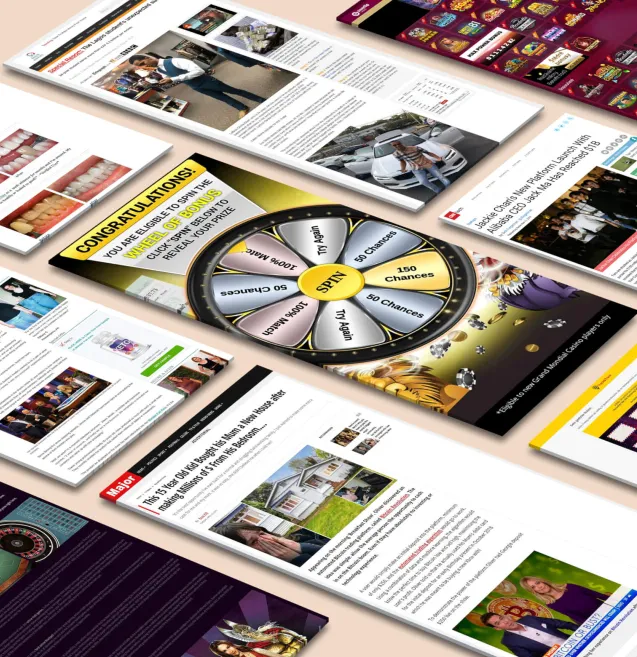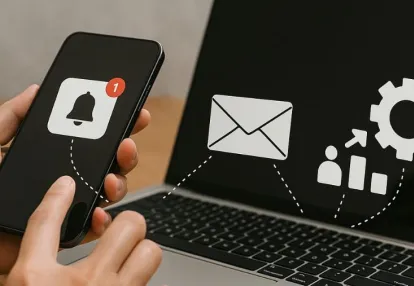
Our spy tools monitor millions of push notification ads from over 90+ countries and thousands of publishers.
Get StartedEmail marketing has evolved beyond simple mass communications. Natural Language Processing (NLP) email automation represents a revolutionary shift in how businesses connect with their audience through intelligent, behavior-driven communications.
NLP email automation combines artificial intelligence with email marketing to understand, analyze, and respond to customer behaviors in real-time. This smart technology interprets user interactions, preferences, and engagement patterns to deliver highly personalized email experiences.
Key Components of NLP-Powered Email Marketing:
AI technologies serve as the backbone of modern email marketing systems, enabling:
Behavioral email sequencing takes this intelligence a step further by creating sophisticated, multi-touch email journeys that adapt to each recipient's actions. These automated sequences respond to specific triggers, ensuring your messages reach customers at the right moment with relevant content.
This smart approach to email marketing transforms standard campaigns into dynamic conversations that evolve with your customers' needs and preferences. Additionally, employing strategies such as dark pool advertising can significantly enhance your overall marketing ROI.
NLP technology transforms raw customer interactions into actionable insights by analyzing patterns in:
This deep analysis enables you to understand customer intent, preferences, and pain points at an unprecedented scale. The AI algorithms detect subtle nuances in language, sentiment shifts, and behavioral signals that human marketers might miss.
Personalization at scale becomes reality when you combine NLP with automated email systems. The technology can:
Your email campaigns gain precision through behavior-based customization. NLP systems track and analyze customer actions to create dynamic content variations:
The AI continuously learns from recipient responses, refining its understanding of what works for different audience segments. This creates a feedback loop that improves personalization accuracy over time, leading to higher engagement rates and stronger customer relationships.
Automated email sequences transform traditional marketing campaigns into dynamic, responsive customer interactions. These sequences create a systematic approach to nurturing leads and maintaining customer relationships through pre-planned, behavior-driven communications.
Triggered emails act as your 24/7 marketing assistant, responding instantly to specific customer actions. When a user downloads a whitepaper, abandons a cart, or reaches a milestone, triggered emails maintain engagement through relevant, timely content.
Customer journey alignment ensures each message matches the recipient's current relationship stage with your brand. A first-time visitor receives different content than a loyal customer, creating relevant experiences that drive engagement.
Smart automation rules enable dynamic content adjustments based on user interactions, ensuring each recipient receives the most relevant message at the optimal time.
Data integration is crucial for effective behavioral email sequencing. By connecting your CRM system with marketing automation platforms, you gain the ability to create personalized email workflows.
Your CRM is the main source of customer data, containing important details about previous purchases, support tickets, and sales interactions. When this data is integrated with marketing platforms, it becomes valuable information that can be used to improve your email campaigns.
This comprehensive view of your customers allows you to target them more accurately based on:
By using integrated platforms, you can divide your audience into specific groups and send them content that is highly relevant to their needs and interests.
Predictive analytics transforms email marketing from reactive to proactive by identifying patterns in customer behavior before they become apparent. Machine learning models analyze vast datasets to predict:
These AI-powered insights enable you to craft targeted email campaigns that anticipate your customers' needs. By processing historical engagement data, predictive models can identify the exact moment when a prospect is most likely to convert.
Your email's success depends heavily on delivery timing. Predictive analytics determines:
Machine learning models excel at detecting subtle shifts in buyer behavior:
Armed with these insights, you can create dynamic email sequences that adapt to each recipient's unique journey. The system continuously learns from new data, refining its predictions and improving campaign effectiveness.
Predictive email sequencing takes the guesswork out of campaign planning by providing data-backed recommendations for content, timing, and audience segmentation. This smart approach to email marketing delivers higher open rates, improved click-through rates, and increased conversions.
Visual workflow builders are changing the game in email marketing. They take complicated automation processes and turn them into easy-to-use interfaces that you can navigate with a simple drag-and-drop motion. No more need for technical skills! Now, marketers can craft intricate email campaigns in just a few minutes instead of spending hours figuring it all out.
With visual builders, you can easily plan out every step of your customer's journey using a simple graphical interface. You have the power to:
All of this can be done from one convenient dashboard without any coding knowledge required!
Tools like Mailchimp's Campaign Builder or HubSpot's Workflow Editor let you see how various email sequences fit together and influence each other.
But wait, there's more! The combination of artificial intelligence (AI) and visual builders takes your workflow automation to another level.
Here's how real-time AI inputs supercharge your email campaigns:
By integrating AI with visual builders, you create workflows that are flexible and responsive. When a customer opens an email, clicks a link, or makes a purchase, the system instantly adapts future communications according to these actions. This level of real-time responsiveness ensures that every step of the customer journey remains relevant and captivating.
Sentiment analysis turns raw email engagement data into actionable insights about your recipients' emotional responses. This technology, powered by natural language processing (NLP), looks at language patterns, tone, and context within email interactions to measure customer satisfaction and engagement levels.
Your email campaigns generate valuable feedback through direct replies, click patterns, and response timing. Sentiment analysis tools process these signals to categorize reactions as positive, negative, or neutral, helping you understand the emotional impact of your messaging.
Real-world applications show impressive results - companies using sentiment analysis in their email campaigns report up to 25% higher open rates and a 15% increase in click-through rates. These improvements come from better-timed, emotionally resonant messages that match recipient preferences and behaviors.
Integrating sentiment analysis with behavioral email sequencing creates a powerful feedback loop. Each interaction provides fresh data to refine your messaging strategy, ensuring your emails consistently hit the right emotional notes with your audience.
NLP-powered behavioral email sequencing, like the email sequences that are transforming traditional email marketing into a dynamic, intelligent system. This technology delivers personalized experiences at scale, turning raw customer data into actionable insights for targeted communication.
The ability to adapt email content based on real-time customer signals creates meaningful interactions that drive engagement. Your marketing campaigns become more effective as they learn and evolve with each customer interaction.
Key Benefits:
This smart automation approach consistently delivers higher ROI for both B2B and B2C businesses. Companies implementing NLP-powered email sequencing report increased conversion rates, stronger customer relationships, and sustainable revenue growth through improved campaign performance.
Receive top converting landing pages in your inbox every week from us.
Must Read
This blog uncovers how AI can transform holiday marketing campaigns into high-performing, data-driven successes. It explains how AI tools help optimize targeting, personalize messaging, and predict consumer behavior for better engagement. Readers will learn practical ways to fine-tune their campaigns and boost conversions during the busy holiday season. Ideal for marketers looking to maximize results and efficiency with AI-powered strategies.
Marcus Chen
7 minNov 21, 2025
Tips & Tricks
This blog explores how combining push notifications with email marketing can create a seamless customer journey that drives higher conversions. It explains how these two channels complement each other — with push delivering instant engagement and email nurturing long-term relationships. Readers will learn actionable tips on timing, personalization, and automation to build a consistent conversion strategy. Perfect for marketers seeking to improve retention and maximize ROI across platforms.
Liam O’Connor
7 minNov 15, 2025
Must Read
Push notifications have become one of the most direct and effective tools for customer retention marketing. These short messages with images or videos go straight to your customers' devices, creating immediate opportunities to remind them about your brand. Unlike emails that often go unopened in busy inboxes, push notifications grab attention with an average open rate of 90% compared to email's 20%.
David Kim
7 minNov 9, 2025




